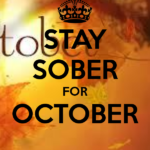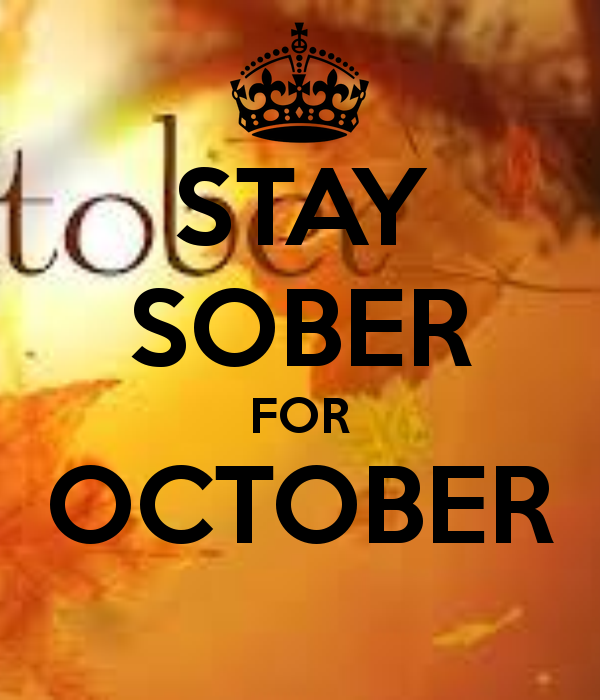By Suzanne Harrington, Published on 10/14/2014 This year, the lovely Laura Whitmore off the telly has swapped booze for juice, a tactic long embraced by health enthusiasts like Gwyneth Paltrow, Miranda Kerr and Blake Lively. But going sober is not just about shiny skin or raising money for charity. It’s about being aware of our drinking habits – do we ever really stop and think about our drinking? Here is an A to Z of alcohol, which publicans and drinks companies tend not to reference in their publicity material. Anyone whose life has ever been made messier by alcohol will tell you: drinking is not all about glamorous individuals socialising over sophisticated glasses of chilled elegance. Instead, here are some truths about booze, our legal and socially normalised drug of choice:
This year, the lovely Laura Whitmore off the telly has swapped booze for juice, a tactic long embraced by health enthusiasts like Gwyneth Paltrow, Miranda Kerr and Blake Lively. But going sober is not just about shiny skin or raising money for charity. It’s about being aware of our drinking habits – do we ever really stop and think about our drinking? Here is an A to Z of alcohol, which publicans and drinks companies tend not to reference in their publicity material. Anyone whose life has ever been made messier by alcohol will tell you: drinking is not all about glamorous individuals socialising over sophisticated glasses of chilled elegance. Instead, here are some truths about booze, our legal and socially normalised drug of choice:
A for Assault
You lookin’ at me? A is also for alcohol-fuelled aggression. Some 46pc of murders in Ireland are alcohol-related, as are 28pc of A&E admissions (source: www.drugsandalcohol.ie). A study of 495 social drinkers by Ohio State University found that those who have a ‘live for the moment’ attitude are more likely to be aggressive while under the influence. Oi! Did you spill my pint?
B is for Blackout
If you do thump someone, you may not remember it. Blackout, or alcohol-induced amnesia, happens when alcohol affects the self-monitoring, attention and working memory areas of the brain. A study by the University of California showed that around 40pc of us are prone to blackout, or its less amnesiac counterpart, brownout – where finer details, rather than the entire drinking time, are forgotten. When it’s all a bit blurry.
C is for Cirrhosis
Terribly unsexy, but massively on the increase amongst Irish habitual drinkers. You don’t have to live on a park bench for your liver to start packing up – you just need to drink around four pints a day for several years for cirrhosis (a fatty liver which becomes irretrievable scarred) to develop. Less if you’re female. Sorry, ladies. Also, some people are more prone than others, purely on the basis of a genetic ability to metabolize alcohol.
D is for Dancing on Tables (see also Disinhibition)
Drinking is a social lubricant. Two to four drinks equals unwinding, relaxing, losing your inhibitions, becoming chattier, more enthusiastic; imbued with a sense of ease and well being. Eight to 10 drinks may see you dancing on tables. Any more than that and, potentially, we are back to A, B, C – Assault, Blackout, Cirrhosis. Yet, how many of us stop after one drink? D is also for denial – personal, cultural, national.
E is for Economic Cost
Alcohol costs a lot, and not just your own bar bill, and takes up 2,000 hospital beds EVERY NIGHT.
F is for Fun
Obviously, drinking is fun. That’s why we do it. Humans have been drinking alcohol for over 12,000 years; it’s ingrained. We mark all major (and minor) social occasions with drinking – births, deaths, weddings, anniversaries, birthdays, graduations, Christmas, bank holidays, summer holidays, winter holidays, celebrations, commiserations. You name it, we have a drink for it. We do not question this. We are mildly suspicious of those who don’t drink. We view them as killjoys. Wet blankets. Puritans.
G is for Glassy Eyed Syndrome
Alcohol does not, like other drugs, sharpen the brain, heighten our perception, or increase our intellect. Yet we believe it does. We believe that, as we drink, it makes us funnier, sexier, cleverer, more attractive, better drivers, amazing singers, fantastic lovers. It can even make us think that kebabs are a good idea. The reality is a slurring, repetitive/maudlin/dogmatic/aggressive/over-amorous version of yourself, depending on your character; you don’t have to be falling down drunk to be a glassy eyed bore with a blunted intellect. Sorry about that.
H is for Hangovers
(see also Hair of the Dog) This drug’s comedown, when severe, is not for wusses. Dehydration, plummeting blood sugar, nausea, exhaustion, irritability, light and noise sensitivity, and a banging headache. The body is in withdrawal. There are two options: terrible suffering or hair of the dog. The best hair of the dog is thought to be a Bloody Mary – potassium, vitamin C, alcohol – although drinking the morning after in order to function is generally known as alcoholism.
I is for Incontinence
Nobody talks about this, ever, because it is so deeply cringey. But it happens. Not after a small sherry, obviously, but there comes a point in drunk sleep when the brain does not respond to the bladder’s wake-up calls. So you pee the bed when passed out. Or someone else’s bed. Or their sofa.
J is for Jail
With the effects of alcohol unlocking both disinhibition and increased aggression, drinking lands quite a lot of people in trouble. In Australia, two out of three arrests test positive for alcohol (Australian Institute Criminology), and in the US, 37pc of the two million jail population were drinking at the time of arrest (US Department of Justice).
K is for Kicking The Habit
You don’t have to be anywhere near alcoholism to benefit from stopping drinking, for a while at least. Clear head, clear eyes, clear skin, clear liver, less mental fog, and lots of extra time, energy and money. If, however, you are ever consciously trying to control your drinking, then you may have a problem.
L is for Liver
This is the organ that does most of the hard work when you drink – 90pc of alcohol is detoxified by your liver. Alcohol dehydrogenase is the enzyme that processes booze and enables it to be metabolised. Women are less able to effectively process alcohol and are therefore more prone to liver disease, as well as osteoporosis and breast cancer exacerbated by non-moderate drinking.
M is for Making Jokes About Messy Drinking
“It must have been a great night because I can’t remember a thing!” Ha ha. “You were so drunk you were lying in the middle of the road!” Tee hee hee. “We had to wrestle your car keys from you!” Hilarious. “And then she threw up in her handbag!” Oh my aching sides.
N is for Normalisation
In Ireland, it is far more normal to drink than not to drink. Eighty per cent of over-18s are regular drinkers (drinkaware.ie), and we tend to binge drink rather than drink little and often. Those not drinking may feel the need to provide a reason: they are driving/taking antibiotics/pregnant etc. The normalisation of not drinking has yet to happen in Ireland, as ordering a non-alcoholic drink remains more remarkable than ordering an alcoholic one.
0 is for Off Switch
Most drinkers have one. You reach a certain stage of your drinking – woozy, fuzzy, or even a little nauseous – and realise that you have had enough. Your internal ‘off switch’ kicks in. One in 10 Irish people don’t have an off switch, a situation not helped by the wider drinking culture and its attendant collusion and denial. If you don’t have an off switch, it’s not a good idea to drink in the first place, because you may not be able to stop. This is not a personality trait, but a symptom of addiction. One in 10 Irish people are alcohol dependent (The Rutland Centre).
P is for Passing Out
Unlike sleeping, which restores the body, passing out does not. Nor do you choose where you pass out, or where you come to: pavements, hedges, bus shelters, nightclub bathroom floors, a friend’s bed, a stranger’s bed, behind the wheel of your car, in a cell. Passing out, even if done in the physical safety of your own bed, is an indication of no off switch, and should be flagged as such. It also means you will be exhausted the next day as passing out does not give the body a chance to recharge.
Q is for Quaking
(see also DTs) The great majority of drinkers will never experience trembling hands, never mind the horrors of delerium tremens (DTs), where acute alcohol withdrawal produces hallucinations and violent shaking. In keeping with the jokey diminishment of problem drinking, a Belgian beer called Delerium Tremens (8.5pc alcohol) has been around since 1989.
R is for Remorse
(see also Resolve) An emotion commonly associated with the morning after binge drinking. The emotional equivalent of the DTs. Oh no, what did I say/do/spend? Who did I text/snog/punch? Creeping feelings of remorse and shame are then supplanted with a resolve to never do it again. Until the next time.
S is for Sex
(see also Beer Goggles) Drinking makes other people seem more sexually attractive, while impeding your own decision-making abilities and impulse control. (See also F for Fun.) This is all wonderful, providing two vital Cs are included – consent and contraception.
T is for Top-Up Drinking
The opposite of binge drinking, where instead you sip sip sip, maintaining a constant level of alcohol in the blood. Which sounds like a good idea, but probably isn’t – the body needs a few days off a week to regenerate.
U is for Units
Often the cause of much hilarity when governments advise us on what constitutes a binge, or how many drinks are safe for a man or a woman to consumer per day. Generally thought to be pathetically inadequate, and very often ignored.
V is for Vomiting
Another deeply unsexy aspect of drinking too much. An accepted rite of passage for beginner drinkers, and an accepted aspect of town centres on Sunday morning. Almost unheard of in Mediterranean cultures, where drinking until you vomit would be regarded as the death of civilisation.
W is for Weight
Drinking makes you fat – think beer belly. Alcohol calories are not stored as fat, which means that excess food calories are. If you drink excessively all the time, however, you tend not to eat, in which case you become malnourished. It is possible to be both fat and malnourished through heavy drinking.
X is for Xia
– as in Drunkorexia Where eating disorders meet alcohol dependency. Involves avoiding eating so that alcohol calories can be consumed without weight gain. Never a good idea, either long or short term. Drinking on an empty stomach causes everything from blackout to ulcers. Have a sandwich, FFS.
Y is for Youthful Exuberance
It is accepted, if not actually expected, for young people to drink too much at weekends and put traffic cones on the heads of city centre statues. Youthful drinking is exploited by the drinks, leisure and hospitality industries, with organised pub crawls, drinking games etc. If the results are too unpleasant, the drinking is relocated to places like Magaluf and Ibiza.
Z is for Zzzzzzzz
Despite popular assumption, kept in place by ruthlessly aggressive marketing strategies, drinking can actually be quite boring. Going out with the specific intention of becoming drunk is neither interesting or exciting. But when everyone else is doing it, and people think you’re weird if you don’t, what else are you to do?




